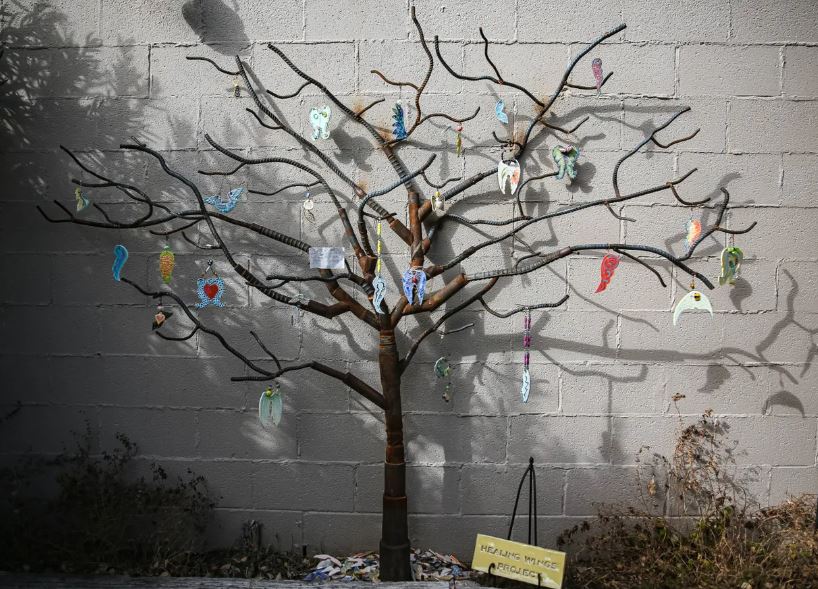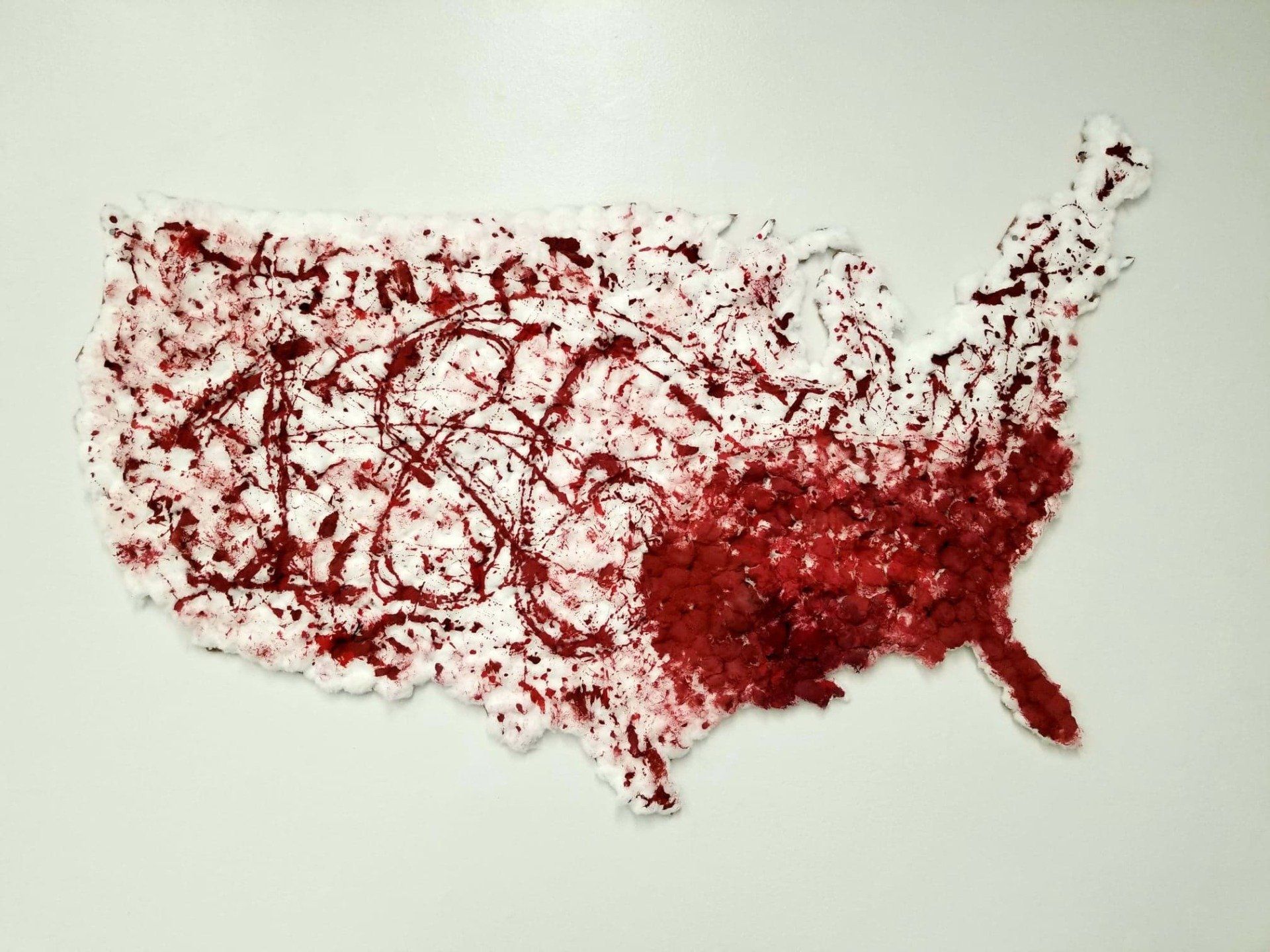Fool's Freedom
Inspired by the Vagrancy act of 1866, artist, Sharod Farmer created Fool's Freedom (cotton, wood, glue, paint).
From America’s conception, slavery has played an integral role in the swaying on the economy. Through the cotton industry booming from the invention of the cotton gin, the need for slaves increased tenfold. This porous material had been used to create various textiles in the north to be dispersed throughout the US.
However, this soft absorbent material actually bears traumatizing memories for these forced individuals currently residing in this country. Picking cotton was laborious and would normally leave cuts on the hands from removing the cotton from the buds. Slaves would work day and night and were often beaten to remain subservient to their master. Essentially if the slave was free in the mind, they could not be a slave.
It wasn’t until 1863 that it was expected to have the slaves emancipated under Lincoln’s order. Eventually, it was officially abolished in 1865 and we celebrate this day as a form of progress. Ultimately, in 1866 the Vagrancy Act was passed which constituted that any person who appeared to be unemployed or homeless would be forced into employment.
If so-called vagrants ran away and were recaptured, they would be forced to work for no compensation while wearing balls and chains - more formally known as the Act Providing for the Punishment of Vagrants. The law came shortly after the American Civil War (1861–1865), when hundreds of thousands of African Americans, many of them just freed from slavery, wandered in search of work and displaced family members.
𝘚𝘭𝘢𝘷𝘦𝘳𝘺 𝘥𝘪𝘥𝘯’𝘵 𝘦𝘯𝘥, 𝘪𝘵 𝘫𝘶𝘴𝘵 𝘸𝘦𝘯𝘵 𝘣𝘺 𝘢𝘯𝘰𝘵𝘩𝘦𝘳 𝘯𝘢𝘮𝘦 - Douglas A. Blackmon
Contact the artist: sharodjr1997@gmail.com











